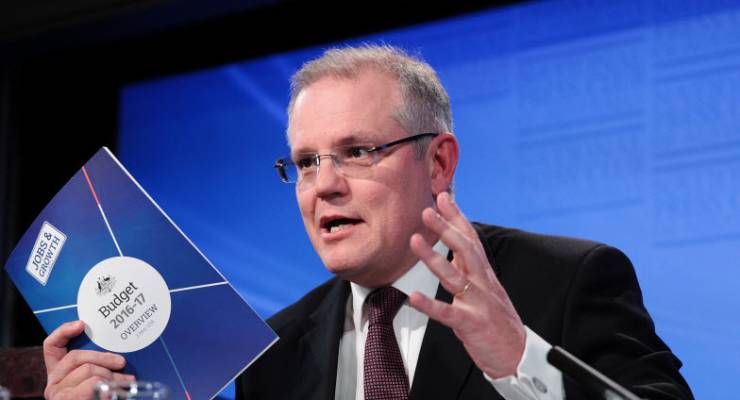
There are really three ways to improve the budget bottom line — through increasing taxes, fair savings measures and strong economic growth.
At a time when we are facing record net debt for the next three years and when the deficit for next year is more than 10 times bigger than in the Liberals’ first budget, the repair effort needs the right combination of all three.
There has been plenty of attention on the first two measures in the aftermath of Scott Morrison’s big-spending and big-taxing budget last month, but not as much on growth.
That will all change when the national accounts are handed down on Wednesday.
While some experts are tipping a slight contraction in the March quarter, which would mean the economy has gone backwards in two of the last three quarters, it pays to wait and see. It’s interesting that Scott Morrison is floating around on the front pages of our newspapers trying to lower expectations of growth already.
For a Treasurer promising “better days ahead”, another negative quarter at a time when the broader global economy is traveling pretty well would serve as a pretty damning indictment on his ability to manage the economy in the national interest.
Already we know that business investment is a big problem, both in terms of growth and national prosperity.
Private new capital expenditure — how much companies spend on long-term, permanent assets like buildings, machinery and land to grow their business — is one of the best indicators of how business investment is tracking.
New data released on Thursday shows capital expenditure in Australia was about $27.8 billion in the March quarter — a 0.6% drop from the last quarter and a fall of almost 10% from the same quarter last year.
But there’s a much bigger story here.
Capital expenditure has fallen 33% since the Coalition came to office in September 2013.
That’s ironic when you consider then-prime minister Tony Abbott declared Australia was “open for business”.
In contrast, the exact same measure rose 64% in the six years prior under Labor.
In fact, capital expenditure was at near-record levels in the September 2013 quarter, meaning the Coalition inherited some of the highest levels of business investment in the nation’s history before allowing it to slide ever since.
This is part of the real story on growth.
Now consider the other side of the government’s “jobs and growth” mantra.
Wages growth is the lowest on record, underemployment is at record highs, full-time jobs are disappearing and people are working fewer hours a week than ever before.
With a track record like this, it’s no wonder Turnbull’s budget is in such a mess.







“With a track record like this, it’s no wonder Turnbull’s budget is in such a mess.”
That is being far too kind, “it’s no wonder Turnbull’s budget is a train wreck” would be a much more apt description & these idiots want to build a high speed rail link up between Melbourne & Brisbane & if the Barnacle gets his way that train wreck will go via Armidale so that any of his APVMA staff who still want to work can commute to their brand new Pork Barrel Pig Sty!!
Shogan it is not even high speed.
Bit disingenuous. Should leave out the mining capex splurge from the data as that would have happened regardless of who was in charge.
..but where is the plan for the transition from mining capex as the driver of economic growth? Who cares who was in Govt when the mining capex boom was on? What matters now is what happens now to keep the economy growing (especially as unit prices for the outputs from all that mining capex have fallen since then)
Maybe Scott Morrison should go back to persecuting refugees… he seemed good at that and approached the job with relish …
Talent is required to manage an economy during major changes. Where is the talent in the LNP?